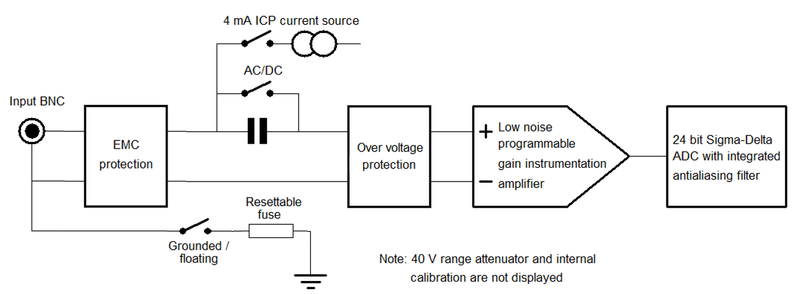Input structure
Each analog input has the following structure in order to reduce external noise influence:

The EMC filter provides general protection against high frequency (> 100 kHz) parasitic signals.
Each input can be grounded through R3 resistor (less than 50 ohm) or kept floating in order to be able to reject ground loop noise due to sensors cabling. A resettable fuse is used for this resistor and can support, if grounded, up to 30V in case of ground potential difference (to avoid) between sensors and analyzer. Each input structure is mainly designed as symmetric in order to provide high common mode voltage rejection.
Analogue ground is connected to the analyzer frame. Inside analyzer cabling is separated between analogue parts and digital parts in order to keep high signal/noise ratio.
The 2 resistors R1 and R2 are used to limit input current when too high voltage is applied on any side of input plug. Ethernet connection is designed and tested to be floating from the frame (Ethernet cable connection is done using an isolation transformer). So ground loops can be avoided between analyzer and PC (be careful using shielded Ethernet cable, STP, as generally shield is connected to each connector frame).